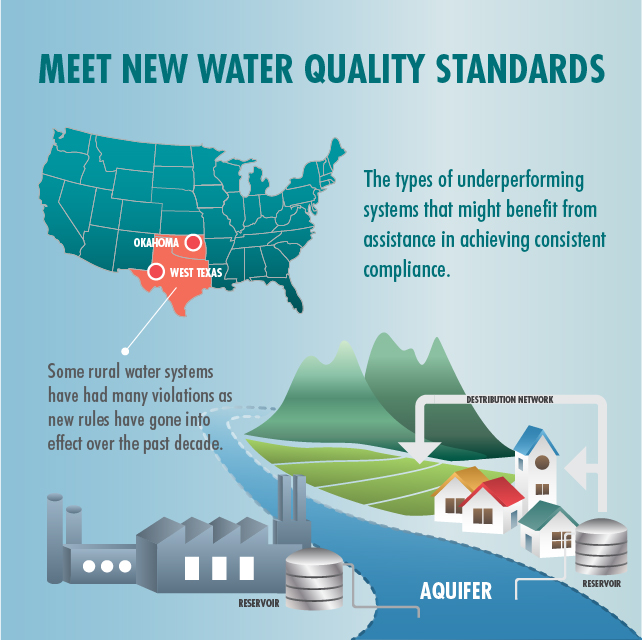US: Facing a Severe Challenge of Drinking Water
Great Effort in Meeting New Water Quality Standards to be made


Even though the health standards for the nation’s water supplies of the US federal government have been stricter and stricter over the past few decades, many local water systems have repeatedly failed to meet these requirements. A new study from University of California found that, since 1982, from 3 to 10 percent of water systems in US have been in violation of federal Safe Drinking Water Act health standards each year. In 2015, as many as 21 million Americans may have been exposed to unsafe drinking water.
- After the 2015 water crisis in Flint, Mich., the safety of America’s tap water has raised public’s concern. A barrage of reports uncovered that a surprisingly large number of local water systems serving millions of Americans sometimes contain unsafe levels of contaminants like lead, nitrates, arsenic or pathogens that can cause gastrointestinal diseases.
- In order to systematically identify problems and set priorities, Dr. Maura Allaire and co-authors from Columbia University’s Water Center looked for patterns in health-based violations over time at 17,900 local water systems around the United States between 1982 and 2015. The purpose of finding these patterns was to help policymakers understand which parts of the United States might require additional inquiry or assistance in meeting national water quality standards.
Unsafe level of local water systems
- They found that health violation for drinking water increased suddenly and strongly in rural areas in the 2000s after E.P.A enacted regulations focused on disinfectants. Chlorine or other chemicals are used to disinfect drinking water supplies. This process, however, causes side effect. Those chemicals can react with organic matter in the water to create new compounds that may pose health risk for human. Water systems that supply minority and low-income communities were more probably to break to comply with federal standards around coliform bacteria, which commonly occur with disease-causing pathogens. The study also showed that privately owned utilities had fewer violations than publicly owned utilities, and larger water systems aim to have fewer violations than smaller systems.
- These problems are especially severe in low-income rural areas. Several places, including Oklahoma and West Texas, have failed to meet the standard of water safety rules issued by the Environmental Protection Agency again and again over the past decade. Smaller communities are endeavoring to maintain their old infrastructure and to update the latest water treatment techniques.
- Based on another study, many smaller utilities have just a few of people who are charged with managing the entire system. It is suggested by Manuel P. Teodoro, a political scientist at Texas A&M University that states could help smaller water utilities combine and consolidate into larger systems that are better able to comply with complex safety rules for improving water quality in rural areas.
- However, Dr. Kristi Pullen Fedinick, a scientist with the Natural Resources Defense Council, an environmental group, thinks this new study may underestimate the full extent of problems of the nation’s drinking water systems. He believes that there’s a huge amount of underreporting nationally.
- In recent years, the E.P.A and Justice Department have often been reluctant to penalize states or municipalities that fall behind on enforcement or reporting. The federal government can, however, provide technical assistance and funding to water utilities that are struggling with health violations.
- State governments is not only mainly responsible for establishing federal water-quality standards, but also maintain the quality of monitoring and enforcement. In fact, some states economize on drinking water programs, and a lot of communities focus on tracing just a few of major contaminants like coliform or disinfectant byproducts. That means potential violations involving other contaminants, like lead, may go underreported.
- Although Scott Pruitt, the head of the E.P.A, has financially supported an E.P.A program that can provide low-interest loans for state water projects, he wants to make a “war on lead” to modernize America’s water infrastructure. Nevertheless, some environmental groups like Natural Resource Defense Council have a doubt about it because a large of budget cut pushed forward by the Trump administration to other important federal drinking water programs at the E.P.A and the Department of Agriculture could eventually damage water safety.
The Worst Places: Low-income rural areas
The role of state government
What can the E.P.A do to deal with these problems?
https://www.watpure.com/index.php